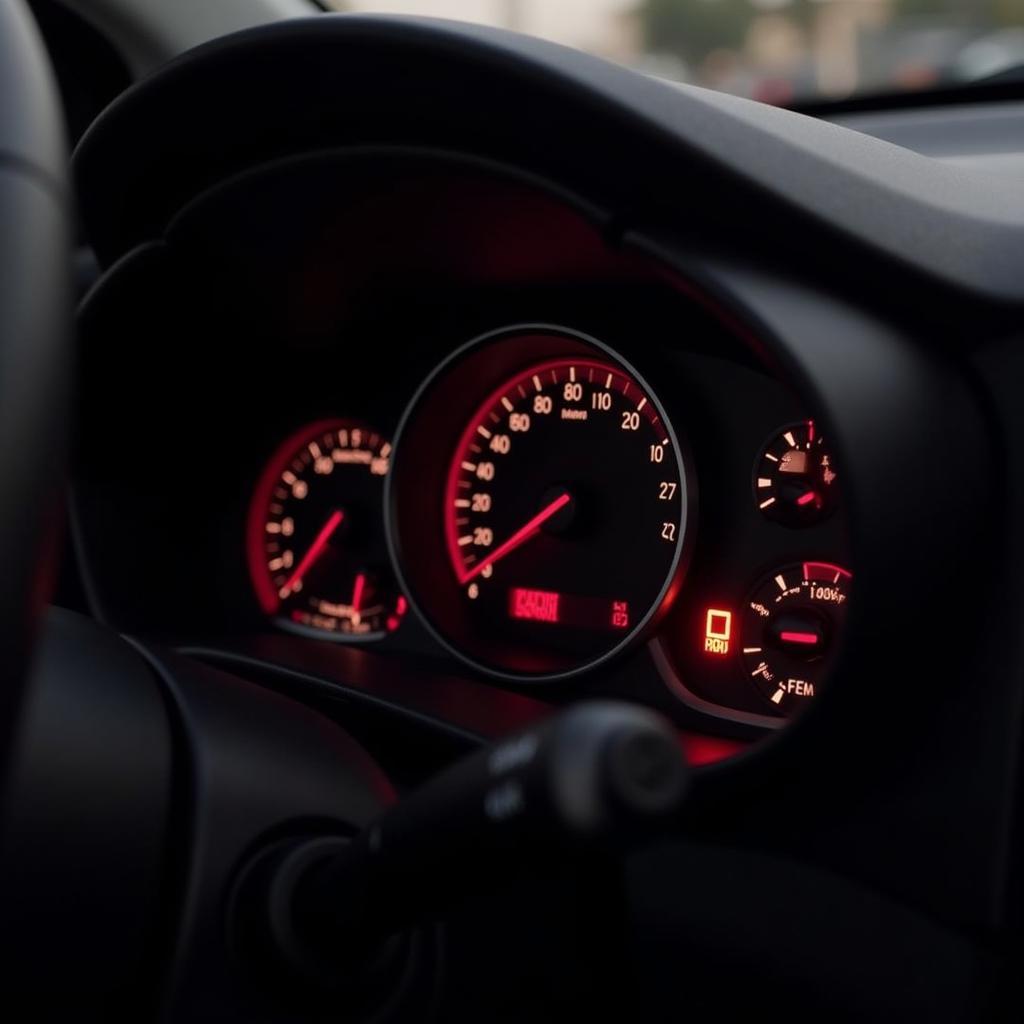The Kia Rio brake warning light can be a jarring sight, signaling potential issues with your braking system. Understanding the various causes and knowing how to troubleshoot this warning light is crucial for maintaining your vehicle’s safety and performance. This comprehensive guide provides you with the necessary information to address the kia rio brake warning light, empowering you to take the right steps toward a solution.
After noticing the kia rio brake warning light illuminate, it’s essential to act promptly. Ignoring the warning could lead to further damage and compromise your safety. A variety of factors can trigger the brake warning light, from a simple issue like low brake fluid to more complex problems with the ABS system. Identifying the root cause is the first step towards rectifying the problem.
Common Causes of the Kia Rio Brake Warning Light
Several reasons can cause the brake warning light to illuminate on your Kia Rio dashboard. Some common culprits include:
- Low brake fluid: This is the most frequent cause and can often be resolved by topping up the brake fluid. However, if the fluid level consistently drops, it indicates a leak that requires immediate professional attention.
- Worn brake pads: Brake pads have wear indicators that trigger the warning light when they reach a critical thickness. Replacing worn brake pads is vital for maintaining optimal braking performance.
- Faulty ABS system: The Anti-lock Braking System (ABS) prevents wheel lockup during hard braking. A malfunctioning ABS module or sensor can trigger the warning light.
- Parking brake engaged: While seemingly obvious, sometimes the parking brake can be partially engaged, illuminating the warning light. Ensure the parking brake is fully released.
- Brake light issues: A burnt-out brake light can sometimes trigger the brake warning light. Regularly checking your brake lights is a good practice for overall safety.
See our guide on brake warning signs for more general information about brake warning lights.
 Kia Rio Brake Warning Light on Dashboard
Kia Rio Brake Warning Light on Dashboard
Troubleshooting the Kia Rio Brake Warning Light
If you encounter the kia rio brake warning light, follow these steps to troubleshoot the problem:
- Check the parking brake: Ensure the parking brake is fully disengaged.
- Inspect the brake fluid level: Open the hood and locate the brake fluid reservoir. Check the fluid level and add brake fluid if necessary. If you are experiencing continuous low brake fluid issues, consult with a mechanic to check for leaks.
- Examine brake pads: Visually inspect the brake pads through the wheel spokes. If the pads appear thin or worn, consult a professional for replacement.
- Check brake lights: Turn on the ignition and check all brake lights, including the high-mounted stop lamp. Replace any burnt-out bulbs.
If you’re also experiencing TPMS issues, see our guide on kia rio brake warning light tpms.
When to Seek Professional Help
While some causes of the kia rio brake warning light can be easily addressed, others require professional expertise. If you’ve checked the basics and the warning light persists, or if you suspect a problem with the ABS system, it’s crucial to consult a qualified mechanic.
“Ignoring a persistent brake warning light can lead to serious safety risks,” says John Miller, ASE Certified Master Technician. “A professional diagnosis is essential to pinpoint the exact problem and prevent potential brake failure.”
For information on brake warning lights in other Kia models, you might find our articles on the check brake light warning kia sportage and 2005 kia sedona brake warning light helpful. These articles cover similar topics related to brake warning lights and can offer additional insights.
Conclusion
The kia rio brake warning light is a crucial safety indicator that should never be ignored. By understanding the potential causes and taking appropriate troubleshooting steps, you can maintain your Kia Rio’s braking system and ensure safe driving conditions. Don’t hesitate to seek professional help when necessary. Addressing brake issues promptly contributes significantly to your safety and the longevity of your vehicle.
“Regular brake maintenance, including inspections and fluid changes, is a proactive way to minimize potential problems,” adds Miller. “Preventive maintenance is always less expensive and time-consuming than dealing with major repairs.” If your Kia Optima is experiencing similar issues, refer to kia optima check brake warning won’t start.
FAQ:
- What does the kia rio brake warning light mean? It typically indicates low brake fluid, worn brake pads, or a problem with the ABS system.
- How do I check my brake fluid level? Locate the brake fluid reservoir under the hood and check the fluid level against the minimum and maximum markings.
- Can I drive with the brake warning light on? It’s not recommended, as it indicates a potential braking system issue.
- What should I do if my brake warning light stays on after adding brake fluid? Consult a qualified mechanic for further diagnosis.
- How often should I replace my brake pads? It varies depending on driving conditions and habits, but generally every 30,000 to 70,000 miles.
- What does ABS stand for? Anti-lock Braking System.
- How can I prevent brake problems in my Kia Rio? Regular brake inspections and fluid changes are essential preventative measures.
